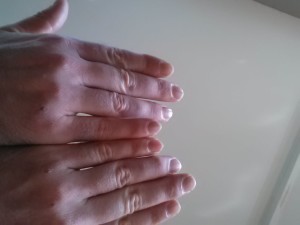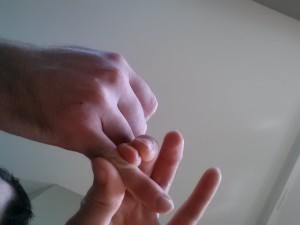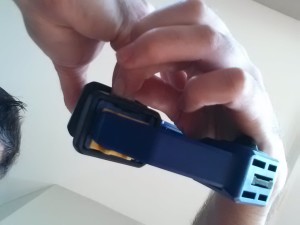This study provides evidence that supplementation of Quercetin, Kaempferol, and Rutin may affect height during development but you can’t be sure until it’s tested. The method by which it induces height growth is by increasing the expansion of the bone lacunae per hypertrophic chondrocyte generating more bang for the buck.
“Externally visible body and longitudinal bone growth is a result of proliferation of chondrocytes[not necessarily; chondrocyte hypertrophy plays a large role]. In growth disorder, there is delay in the age associated increase in height[not always]. The present study evaluates the effect of extract from transgenic tomato fruit expressing AtMYB12 transcription factor on bone health including longitudinal growth. Constitutive expression of AtMYB12 in tomato led to a significantly enhanced biosynthesis of flavonoids in general and the flavonol biosynthesis in particular. Pre-pubertal ovary intact BALB/c mice received daily oral administration of vehicle and ethanolic extract of wild type (WT-TOM) and transgenic AtMYB12-tomato (MYB12-TOM) fruits for six weeks. Animal fed with MYB12-TOM showed no inflammation in hepatic tissues and normal sinusoidal Kupffer cell morphology. MYB12-TOM extract significantly increased tibial and femoral growth and subsequently improved the bone length as compared to vehicle and WT-TOM. Histomorphometry exhibited significantly wider distal femoral and proximal tibial growth plate, increased number and size of hypertrophic chondrocytes in MYB12-TOM which corroborated with micro-CT and expression of BMP-2 and COL-10, marker genes for hypertrophic cells. We conclude that metabolic reprogramming of tomato by AtMYB12 has the potential to improve longitudinal bone growth thus helping in achievement of greater peak bone mass during adolescence.”
What’s significant is that this improves bone growth in normal individuals.
“the proliferative zone contains replicate chondrocytes arranged in columns parallel to the long axis of the bone”
“the proliferative chondrocytes located farthest from the resting zone stop replicating and enlarge to become hypertrophic chondrocytes which subsequently form bone. these cells also maintain the columnar alignment in the hypertrophic zone.”
“growing female mice fed with extract from MYB12-TOM affected formation, quality and length of the bone. Extract from MYB12-TOM significantly increased the length by interstitial growth of the epiphyseal plate of bones by the expansion of the lacunae in the hypertrophic cells in pre-pubertal stage.”
“genetically engineered transgenic tomatoes (MYB12-TOM) expressing a flavonol specific transcription factor from Arabidopsis, AtMYB1214. The fruits of MYB12-TOM accumulated significantly higher amount of flavonols as compared to wild type tomatoes (WT-TOM).”
“expansion of the lacunae in the hypertrophic cells leads to the increased longitudinal growth”
The genetically altered tomatoes had much higher levels of Quercetin, Kaempferol, and Rutin than normal,
“Extracts from MYB12-TOM increased the femur length significantly by 6.1% (P < 0.05) as compared to WT-TOM. In case of tibia, WT-TOM and MYB12-TOM increased the bone length by 5.54% (P < 0.05) and 9.98% (P < 0.001) as compared to control group respectively. Further, comparisons within experimental groups show that MYB12-TOM increased tibial length significantly by 4.2% (P < 0.05) as compared to WT-TOM group”
So it may be possible that Quercetin, Kaempferol, and Rutin supplements to have a significant impact on height during development.
“transgenic MYB12-TOM group exhibited significantly higher COL10a expression from control group (P < 0.001) and WT-TOM (P < 0.001)”



